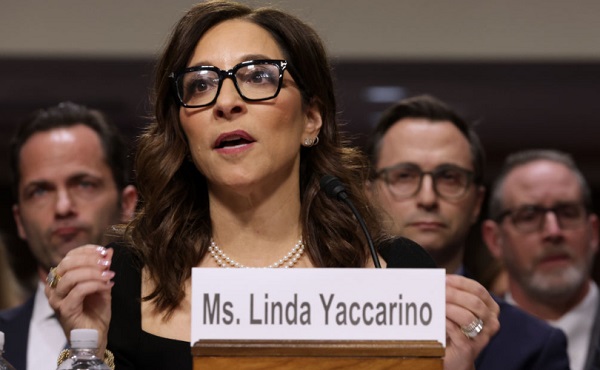Addictions
Ontario to close 10 safe consumption sites and open 19 recovery hubs

A photo of the South Riverdale neighbourhood. (Photo credit: Andrea Nickel)
News release from Break The Needle

Ontario’s decision to close safe consumption sites near schools and daycares comes in the wake of a bystander’s death and class-action lawsuit
In a dramatic shift in policy, Ontario is closing 10 safe consumption sites located near schools and daycares, citing public safety concerns.
“Our first priority must always be protecting our communities, especially when it comes to our most innocent and vulnerable — our children,” said Ontario Health Minister Sylvia Jones at an Association of Municipalities of Ontario conference in Ottawa on Tuesday.
Safe consumption sites, which enable people to use illicit drugs with sterile equipment under staff supervision, will be prohibited from operating within 200 metres of schools and child-care centres after March 31, 2025.
The province also plans to introduce legislation to prevent municipalities from establishing new consumption sites, requesting the decriminalization of illegal drugs or participating in federal safe supply initiatives, a health ministry press release says.
Safe consumption sites have faced mounting scrutiny in the wake of community feedback highlighting their effect on public safety.
“We’ve noticed a real change from 2021 onwards,” Andrea Nickel, a parent who lives near a safe consumption site at Toronto’s South Riverdale Community Health Centre, told Canadian Affairs in May.
“At the beginning of last year it just escalated out of control.”
Unacceptable danger
Ontario opened its first safe consumption site in 2017 with the aim of reducing overdose deaths and providing users with a gateway to treatment. Today, there are 23 safe consumption sites across the province, 17 of which are provincially funded.
KeepSIX, the safe consumption site in South Riverdale, is among the sites facing closure. Last July, Karolina Huebner-Makurat, a local resident and mother of two, was fatally shot during a gunfight outside the site. Her death prompted Ontario to conduct two reviews of the centre and to also review the 16 other provincially funded sites.
A review of keepSIX conducted by the hospital network Unity Health Toronto and released in February recommended improvements in security, community relations, law enforcement communication and staff training. It did not recommend closure.
The second review, released in April and conducted by former health-care executive Jill Campbell, also opposed closure. It advocated instead for expanded harm reduction and treatment, enhanced security and increased mental health support.
In March 2024, two South Riverdale residents launched a class-action lawsuit against the operator of keepSIX and all levels of government, Canadian Affairs reported in May. The lawsuit alleges the site has exposed the community to unacceptable danger.
The site’s proximity to daycares and schools and its role in exposing children to illicit drugs and used needles are at the heart of that case.
Reacting to this week’s announcement, South Riverdale parent Andrea Nickel said she is supportive of the site’s services. “[But] it is not unreasonable to ask that they are balanced with community safety, specifically kids’ safety.”
South Riverdale’s response cited the centre’s role in reversing 74 overdoses in 2023.
“Every overdose reversed is a life saved,” Anne Marie Aikins, a public affairs consultant at AMA Communications, said on behalf of the centre.
Subscribe for free to get BTN’s latest news and analysis – or donate to our investigative journalism fund.
‘Devil’s in the details’
In Tuesday’s address, Ontario’s health minister also announced a $378-million investment to establish 19 new Homelessness and Addiction Recovery Treatment Hubs (HART hubs) across the province. These recovery-focused hubs will offer social support services and employment assistance to individuals struggling with addiction.
They will not provide supervised drug consumption, needle exchange programs or the “safe supply” of prescribed controlled substances.
“The devil’s in the details with these things,” said John-Paul Michael, an addictions case manager in Toronto who has extensive experience in harm reduction and lived experience with substance use.
“Everyone I know in the harm-reduction community is very much in favour of having better access to treatment, better access to detox, better wraparound care,” he said. “The problem becomes when it is at the expense of other evidence-based care.”
Michael says safe consumption sites are often the only form of health care available to individuals struggling with addiction. Eliminating them would leave these individuals without support, he says.
“Safe consumption sites are essential for saving lives, particularly for those who may never seek formal treatment,” he said. “Eliminating these supports disregards the value of human life.”
Michael is also concerned about the reduction of needle exchange services, which are crucial for managing HIV and Hepatitis C rates and lessening the burden on emergency rooms.
“Community-based nurses at [safe consumption sites] provide basic care that can prevent emergency department visits and potentially severe outcomes, such as [intensive care unit] stays,” Michael said.
The province will soon seek proposals to establish up to 10 HART hubs. Priority will be given to proposals that aim to transition existing safe consumption sites — especially those facing closure — into HART hubs.
“[T]he likelihood is that [these transitions] would happen very quickly,” Health Minister Jones told reporters on Tuesday. “The other applications — it will depend on what they bring forward.”
This article was produced through the Breaking Needles Fellowship Program, which provided a grant to Canadian Affairs, a digital media outlet, to fund journalism exploring addiction and crime in Canada. Articles produced through the Fellowship are co-published by Break The Needle and Canadian Affairs.
Addictions
Can addiction be predicted—and prevented?

These four personality traits are predictive of addiction. A new program is using this knowledge to prevent addiction from ever developing
In classrooms across Canada, addiction prevention is getting personal.
Instead of warning students about the dangers of drugs, a program called PreVenture teaches students about themselves — and it’s working.
Developed by Canadian clinical psychologist Patricia Conrod, PreVenture helps young people recognize how traits like risk-taking or negative thinking shape their reactions to stress.
“When you intervene around these traits and help people learn new cognitive behavioural strategies to manage these traits, you are able to reduce their substance use,” said Conrod, who is also a professor at the Université de Montréal.
By tailoring addiction prevention strategies to individual personality profiles, the program is changing how we think about addiction — from something we react to, to something we might stop before it starts.
And now, scientists say the potential for early intervention is going even deeper — down to our genes.
Personality and addiction
PreVenture is a personality-targeted prevention program that helps young people understand and manage traits linked to a higher propensity for future substance use.
The program focuses on four core traits — anxiety sensitivity, sensation seeking, impulsivity and hopelessness — that shape how individuals experience the world and respond to stress, social situations and emotional challenges.
“They don’t only predict who’s at risk,” said Conrod in an interview with Canadian Affairs. “They predict what you’re at risk for with quite a lot of specificity.”
Anxiety sensitivity shows up in people who feel overwhelmed by physical symptoms like a racing heart or dizziness. People with this trait may ultimately turn to alcohol, benzodiazepines such as Xanax, or opioids to calm their bodies.
Sensation seeking is characterized by a desire for excitement and novel experiences. This trait is associated with a higher likelihood of being drawn to substances like cannabis, MDMA, psilocybin or other hallucinogens.
“[Cannabis] alters their perceptual experiences, and so makes things feel more novel,” said Conrod.
Sensation seeking is also associated with binge drinking or use of stimulants such as cocaine.
The trait of impulsivity involves difficulty controlling urges and delaying gratification. This trait is associated with a higher likelihood of engaging in risky behaviours and an increased risk of addiction to a broad range of substances.
“Young people with attentional problems and a core difficulty with response inhibition have a hard time putting a stop on a behaviour once they’ve initiated it,” said Conrod.
Finally, the trait of hopelessness is tied to a pessimistic, self-critical mindset. People with this trait often expect rejection or assume others are hostile, so they may use alcohol or opioids to dull emotional pain.
“We call it negative attributional style,” said Conrod. “They have come to believe that the world is against them, and they need to protect themselves.”
These traits also cluster into two broader categories — internalizing and externalizing.
Anxiety sensitivity and hopelessness direct distress inward, while sensation seeking and impulsivity are characterized by outward disinhibition.
“These traits change your perception,” said Conrod. “You see the world differently through these traits.”
Conrod also notes that these traits appear across cultures, making targeted addiction prevention broadly applicable.
Personality-based prevention
Unlike most one-size-fits-all drug prevention programs, PreVenture tailors its prevention strategies for each individual trait category to reduce substance use risk.
The program uses a brief personality assessment tool to identify students’ dominant traits. It then delivers cognitive-behavioural strategies to help users manage stress, emotions and risky behaviours associated with them.

Recreation of the personality assessment tool based on the substance use risk profile scale — a scale measuring traits linked to reinforcement-specific substance use profiles. | Alexandra Keeler
Students learn to recognize how their dominant trait influences their thoughts and reactions — and how to shift those patterns in healthier directions.
“We’re trying to raise awareness to young people about how these traits are influencing their automatic thinking,” said Conrod. “You’re having them be a little more critical of their thoughts.”
Hopelessness is addressed by teaching strategies to challenge depressive thoughts; those high in sensation seeking explore safer ways to satisfy their need for stimulation; anxiety sensitivity is managed through calming techniques; and impulsivity is reduced by practicing pausing before acting.
Crucially, the program emphasizes the strengths of each trait as well.
“We try to present [traits] in a more positive way, not just a negative way,” said Sherry Stewart, a clinical psychologist at Dalhousie University who collaborates with Conrod.
“Your personality gets you into trouble — certainly, we discuss that — but also, what are the strengths of your personality?”
While a main goal of the program is preventing substance use disorders, the program barely discusses substances.
“You don’t really have to talk about substances very much,” said Conrod. “You talk more about how you’re managing the trait, and it has this direct impact on someone’s motivation to use, as well as how severely they experience mental health symptoms.”
The workshops make it clear, however, that while substances may offer temporary relief, they often worsen the very symptoms participants are trying to manage.
The genetic angle
Catherine Brownstein, a Harvard Medical School professor and geneticist at Boston Children’s Hospital, says genetic factors also help explain why some people are more vulnerable to addiction.
“A lot of personality is genetic,” she said in an interview with Canadian Affairs.
Her research has identified 47 locations in human DNA that affect brain development and shape personality traits.
While substance use risk cannot yet be detected genetically, certain gene variants — like SHANK3, NRXN1 and CRY1 — are linked to psychiatric disorders that often co-occur with substance use, including ADHD and schizophrenia.
Brownstein also says genetic variations influence pain perception.
Some variants increase pain sensitivity, while others eliminate it altogether. One such gene, SCN9A, may make individuals more likely to seek opioids for relief.
“If you’re in pain all the time, you want it to stop, and opioids are effective,” said Brownstein.
While we cannot yet predict addiction risk from genetics alone, Brownstein says she thinks genetic screening combined with psychological profiling could one day personalize prevention even further.
Expansion and challenges
Conrod’s personality-targeted intervention program, PreVenture, has proven highly effective.
A five-year study published in January found that students who participated in PreVenture workshops were 23 to 80 per cent less likely to develop substance use disorders by Grade 11.
Stewart says that the concept of PreVenture began with adults with substance use disorders, but research suggests earlier intervention can alter life trajectories. That insight has driven PreVenture’s expansion to younger age groups.
Conrod’s team delivers PreVenture to middle and high school students, UniVenture to university students and OpiVenture to adults in treatment for opioid dependence.
PreVenture has been implemented in schools across the U.S. and Canada, including in B.C., Ontario, Quebec, Nova Scotia and Newfoundland and Labrador. Five Canadian universities are participating in the UniVenture study.
However, currently, Canada’s flagship youth prevention strategy is based on the Icelandic Prevention Model — a 1990s framework that aims to reduce youth substance use by focusing on environmental factors such as family, school and peer influence.
While the Icelandic Prevention Model has shown success in Iceland, it has serious limitations. It lacks a mental health component, does not specifically address opioid use and has demonstrated mixed results by gender.
Despite strong evidence for personality-targeted prevention, programs like PreVenture remain underused.
Conrod says education systems often default to less effective, generic methods like one-off guest speakers. She also cites staffing shortages and burnout in schools, along with insufficient mental health services, as major barriers to implementing a new program.
Still, momentum is building.
B.C. has aligned their prevention services with the PreVenture model. And organizations such as the youth wellness networks Foundry B.C. and Youth Wellness Hubs Ontario are offering the program and expanding its reach.
Conrod believes the power of the program lies in helping young people feel seen and understood.
“It’s really important that a young person is provided with the space and focus to recognize what’s unique about [their] particular trait,” she said.
“Recognize that there are other people in the world that also think this way [and tell them] you’re not going crazy.”
This article was produced through the Breaking Needles Fellowship Program, which provided a grant to Canadian Affairs, a digital media outlet, to fund journalism exploring addiction and crime in Canada. Articles produced through the Fellowship are co-published by Break The Needle and Canadian Affairs.
Addictions
‘Over and over until they die’: Drug crisis pushes first responders to the brink

First responders say it is not overdoses that leave them feeling burned out—it is the endless cycle of calls they cannot meaningfully resolve
The soap bottle just missed his head.
Standing in the doorway of a cluttered Halifax apartment, Derek, a primary care paramedic, watched it smash against the wall.
Derek was there because the woman who threw it had called 911 again — she did so nearly every day. She said she had chest pain. But when she saw the green patch on his uniform, she erupted. Green meant he could not give her what she wanted: fentanyl.
She screamed at him to call “the red tags” — advanced care paramedics authorized to administer opioids. With none available, Derek declared the scene unsafe and left. Later that night, she called again. This time, a red-patched unit was available. She got her dose.
Derek says he was not angry at the woman, but at the system that left her trapped in addiction — and him powerless to help.
First responders across Canada say it is not overdoses that leave them feeling burned out — it is the endless cycle of calls they cannot meaningfully resolve. Understaffed, overburdened and dispatched into crises they are not equipped to fix, many feel morally and emotionally drained.
“We’re sending our first responders to try and manage what should otherwise be dealt with at structural and systemic levels,” said Nicholas Carleton, a University of Regina researcher who studies the mental health of public safety personnel.
Canadian Affairs agreed to use pseudonyms for the two frontline workers referenced in this story. Canadian Affairs also spoke with nine other first responders who agreed to speak only on background. All of these sources cited concerns about workplace retaliation for speaking out.
Moral injury
Canada’s opioid crisis is pushing frontline workers such as paramedics to the brink.
A 2024 study of 350 Quebec paramedics shows one in three have seriously considered suicide. Globally, ambulance workers have among the highest suicide rates of public service personnel.
Between 2017 and 2024, Canadian paramedics responded to nearly 240,000 suspected opioid overdoses. More than 50,000 of those were fatal.
Yet many paramedics say overdose calls are not the hardest part of the job.
“When they do come up, they’re pretty easy calls,” said Derek. Naloxone, a drug that reverses overdoses, is readily available. “I can actually fix the problem,” he said. “[It’s a] bit of instant gratification, honestly.”
What drains him are the calls they cannot fix: mental health crises, child neglect and abuse, homelessness.
“The ER has a [cardiac catheterization] lab that can do surgery in minutes to fix a heart attack. But there’s nowhere I can bring the mental health patients.
“So they call. And they call. And they call.”
Thomas, a primary care paramedic in Eastern Ontario, echoes that frustration.
“The ER isn’t a good place to treat addiction,” he said. “They need intensive, long-term psychological inpatient treatment and a healthy environment and support system — first responders cannot offer that.”
That powerlessness erodes trust. Paramedics say patients with addictions often become aggressive, or stop seeking help altogether.
“We have a terrible relationship with the people in our community struggling with addiction,” Thomas said. “They know they will sit in an ER bed for a few hours while being in withdrawals and then be discharged with a waitlist or no follow-up.”
Carleton, of the University of Regina, says that reviving people repeatedly without improvement decreases morale.
“You’re resuscitating someone time and time again,” said Carleton, who is also director of the Psychological Trauma and Stress Systems Lab, a federal unit dedicated to mental health research for public safety personnel. “That can lead to compassion fatigue … and moral injury.”
Katy Kamkar, a clinical psychologist focused on first responder mental health, says moral injury arises when workers are trapped in ethically impossible situations — saving a life while knowing that person will be back in the same state tomorrow.
“Burnout is … emotional exhaustion, depersonalization, and reduced personal accomplishment,” she said in an emailed statement. “High call volumes, lack of support or follow-up care for patients, and/or bureaucratic constraints … can increase the risk of reduced empathy, absenteeism and increased turnover.”
Kamkar says moral injury affects all branches of public safety, not just paramedics. Firefighters, who are often the first to arrive on the scene, face trauma from overdose deaths. Police report distress enforcing laws that criminalize suffering.
Understaffed and overburdened
Staffing shortages are another major stressor.
“First responders were amazing during the pandemic, but it also caused a lot of fatigue, and a lot of people left our business because of stress and violence,” said Marc-André Périard, vice president of the Paramedic Chiefs of Canada.
Nearly half of emergency medical services workers experience daily “Code Blacks,” where there are no ambulances available. Vacancy rates are climbing across emergency services. The federal government predicts paramedic shortages will persist over the coming decade, alongside moderate shortages of police and firefighters.
Unsafe work conditions are another concern. Responders enter chaotic scenes where bystanders — often fellow drug users — mistake them for police. Paramedics can face hostility from patients they just saved, says Périard.
“People are upset that they’ve been taken out of their high [when Naloxone is administered] and not realizing how close to dying they were,” he said.
Thomas says safety is undermined by vague, inconsistently enforced policies. And efforts to collect meaningful data can be hampered by a work culture that punishes reporting workplace dangers.
“If you report violence, it can come back to haunt you in performance reviews” he said.
Some hesitate to wait for police before entering volatile scenes, fearing delayed response times.
“[What] would help mitigate violence is to have management support their staff directly in … waiting for police before arriving at the scene, support paramedics in leaving an unsafe scene … and for police and the Crown to pursue cases of violence against health-care workers,” Thomas said.
“Right now, the onus is on us … [but once you enter], leaving a scene is considered patient abandonment,” he said.
Upstream solutions
Carleton says paramedics’ ability to refer patients to addiction and mental health referral networks varies widely based on their location. These networks rely on inconsistent local staffing, creating a patchwork system where people easily fall through the cracks.
“[Any] referral system butts up really quickly against the challenges our health-care system is facing,” he said. “Those infrastructures simply don’t exist at the size and scale that we need.”
Périard agrees. “There’s a lot of investment in safe injection sites, but not as much [resources] put into help[ing] these people deal with their addictions,” he said.
Until that changes, the cycle will continue.
On May 8, Alberta renewed a $1.5 million grant to support first responders’ mental health. Carleton welcomes the funding, but says it risks being futile without also addressing understaffing, excessive workloads and unsafe conditions.
“I applaud Alberta’s investment. But there need to be guardrails and protections in place, because some programs should be quickly dismissed as ineffective — but they aren’t always,” he said.
Carleton’s research found that fewer than 10 mental health programs marketed to Canadian governments — out of 300 in total — are backed up by evidence showing their effectiveness.
In his view, the answer is not complicated — but enormous.
“We’ve got to get way further upstream,” he said.
“We’re rapidly approaching more and more crisis-level challenges… with fewer and fewer [first responders], and we’re asking them to do more and more.”
This article was produced through the Breaking Needles Fellowship Program, which provided a grant to Canadian Affairs, a digital media outlet, to fund journalism exploring addiction and crime in Canada. Articles produced through the Fellowship are co-published by Break The Needle and Canadian Affairs.
-

 Business1 day ago
Business1 day agoWEF-linked Linda Yaccarino to step down as CEO of X
-

 Freedom Convoy2 days ago
Freedom Convoy2 days agoCourt Orders Bank Freezing Records in Freedom Convoy Case
-

 Crime2 days ago
Crime2 days agoTucker Carlson: US intelligence is shielding Epstein network, not President Trump
-

 Business1 day ago
Business1 day ago‘Experts’ Warned Free Markets Would Ruin Argentina — Looks Like They Were Dead Wrong
-

 International1 day ago
International1 day agoSecret Service suspends six agents nearly a year after Trump assassination attempt
-

 Automotive1 day ago
Automotive1 day agoAmerica’s EV Industry Must Now Compete On A Level Playing Field
-

 Business23 hours ago
Business23 hours agoCarney government should recognize that private sector drives Canada’s economy
-

 Bruce Dowbiggin22 hours ago
Bruce Dowbiggin22 hours agoThe Covid 19 Disaster: When Do We Get The Apologies?








